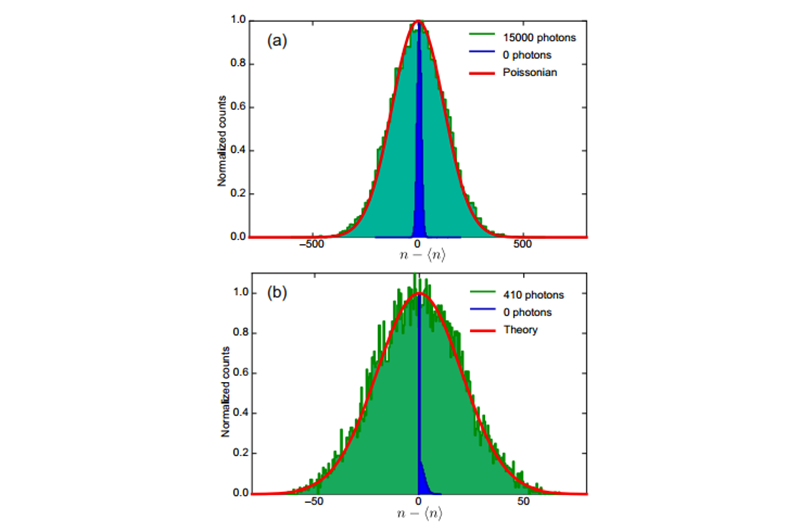Swiss physicists turned Nokia N9 into a quantum random number generator
In the field of computer security, the use of a random number generator (RNG) is the basis for the creation of any cryptographic system. For example, RNG are used to protect personal data when processing transactions from credit cards made via the Internet. Although not for us to explain.

Interesting news from the field of developing random number generators came recently from Switzerland: physicists from the University of Geneva found a way to get random numbers using the principle of quantum uncertainty when processing a signal from a Nokia N9 digital camera sensor.
Let's try to figure out what this is about.
Speaking about the state of affairs in the field of cryptography at the moment, it can be noted that recently there have been invented quite a few ways to get random and pseudo-random numbers from various sources.
')
However, it is important not only to create a system for generating numbers, but to make it such that it is not a weak link in the protection of a cryptographic system (systems with pseudo-random cycles can be hacked by hackers). This is a rather nontrivial task that cannot be solved purely by software, since there must be some kind of analog stream from outside the system.
The best solution in this case is the use of a quantum random number generator, which makes it impossible to predict the generation of random loops.

The principle of operation of such RNG is based on the analysis (calculation) of photon emission. This quantum process is, by its nature, random, since in a specific time interval a random number of photons is obtained from a light source.
Although this method is usually quite expensive and complicated, Swiss students seem to have found a budget solution based on the Nokia N9 smartphone.
The authors of the research note that the photosensitive sensors of modern smartphones have achieved high quality and are able to take into account quantum effects of this kind.
Each pixel in the 8 megapixel sensor Nokia N9 in the prototype created by students can determine the number of photons for a certain period of time, and then convert them into a series of random numbers.

After a series of tests, where a green LED, which uniformly illuminates all the pixels in the sensor, acted as a light source, we were able to calculate the performance of this system. The result is random numbers in the 1 megabit / s stream. Of course, this is not a record figure for RNG systems, but this is more than enough for reliable cryptographic encryption of applications for mobile devices. Also in the course of the experiment it was revealed that the generator based on Nokia N9 gives only one deviation from the ideal random sequence for 1096 iterations.

Comparison of measurements of quantum and classical noise on the ATIK 383L specialized detector (above) and the Nokia N9 smartphone (below)
More information about this project can be found in the published study at the link.

Interesting news from the field of developing random number generators came recently from Switzerland: physicists from the University of Geneva found a way to get random numbers using the principle of quantum uncertainty when processing a signal from a Nokia N9 digital camera sensor.
Let's try to figure out what this is about.
Speaking about the state of affairs in the field of cryptography at the moment, it can be noted that recently there have been invented quite a few ways to get random and pseudo-random numbers from various sources.
')
However, it is important not only to create a system for generating numbers, but to make it such that it is not a weak link in the protection of a cryptographic system (systems with pseudo-random cycles can be hacked by hackers). This is a rather nontrivial task that cannot be solved purely by software, since there must be some kind of analog stream from outside the system.
The best solution in this case is the use of a quantum random number generator, which makes it impossible to predict the generation of random loops.

The principle of operation of such RNG is based on the analysis (calculation) of photon emission. This quantum process is, by its nature, random, since in a specific time interval a random number of photons is obtained from a light source.
Although this method is usually quite expensive and complicated, Swiss students seem to have found a budget solution based on the Nokia N9 smartphone.
The authors of the research note that the photosensitive sensors of modern smartphones have achieved high quality and are able to take into account quantum effects of this kind.
Each pixel in the 8 megapixel sensor Nokia N9 in the prototype created by students can determine the number of photons for a certain period of time, and then convert them into a series of random numbers.

After a series of tests, where a green LED, which uniformly illuminates all the pixels in the sensor, acted as a light source, we were able to calculate the performance of this system. The result is random numbers in the 1 megabit / s stream. Of course, this is not a record figure for RNG systems, but this is more than enough for reliable cryptographic encryption of applications for mobile devices. Also in the course of the experiment it was revealed that the generator based on Nokia N9 gives only one deviation from the ideal random sequence for 1096 iterations.

Comparison of measurements of quantum and classical noise on the ATIK 383L specialized detector (above) and the Nokia N9 smartphone (below)
More information about this project can be found in the published study at the link.
Source: https://habr.com/ru/post/237545/
All Articles